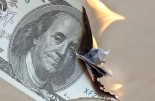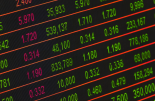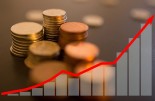Han Dieperink: The dynamic beer price
Han Dieperink: The dynamic beer price

By Han Dieperink, written in a personal capacity
Last weekend the Oktoberfest started in Bavaria. From Saturday September 16 to Tuesday October 3, the world's largest beer festival will be attended by more than five million people. Traditionally, the beer is only served in a so-called Maß, a beer glass with a capacity of one liter.
Over the past 100 years, the price of a glass of beer has almost consistently risen faster than the broader inflation rate. However, there is an increasing difference between the lowest beer price and the highest beer price at the Oktoberfest. This is a phenomenon that we are increasingly seeing in other parts of the economy.
Happy hour
Everyone is familiar with the phenomenon of 'happy hour', a short period during which a café sells drinks at a much lower price than normal. This is mainly used to attract customers during the less busy hours, often before the big crowds. The Netherlands would not be the Netherlands if there were objections to this. In the past, some even demanded a ban on the 'happy hour' phenomenon because it allegedly encouraged alcohol use among young people.
There is now an alcohol ban for young people. Useful in itself, because alcohol has many negative effects on young people. But because of this ban, there are now excesses in which liters of spirits are consumed illegally. Since then, the number of binge drinkers has increased sharply. Furthermore, the alcohol ban has led to up to a third more drug use.
When young people are finally allowed to consume alcohol as students, things can still go wrong. After all, pushing the boundaries is an important part of the learning experiences of young people. This helps young people control impulsive behavior later in life. It is precisely this loss of this control that plays a role in alcohol addiction later in life.
Dynamic pricing
Thanks to modern technology, it is possible to adjust prices more and more often. When there is more demand, prices rise. During quiet times they drop again. This is called dynamic pricing. Airlines have been doing this since the 1980s. Hotel rooms are more expensive when hotels in that area are fully booked. Furthermore, it is of course very common that prices are higher in the high season than in the low season. There is also something called the early booking discount when booking holidays. These are all reasonably predictable price developments for the consumer. Dynamic pricing is becoming much less predictable these days.
Modern dynamic pricing uses algorithms and artificial intelligence with the sole purpose of optimizing turnover. Amazon adjusts the prices of its products every ten minutes based on demand, which is determined using millions of real-time data points. Thanks to the technology, adjusting prices requires little effort and by measuring the effect in real-time, turnover can be further optimized.
Sometimes there are ethical objections to dynamic pricing. For example, the prices of an Uber in London rose sharply after the attacks on London Bridge in June 2017. The prices of concerts can also fluctuate significantly. Now those tickets are often bought by other concertgoers, who can sell such an extra ticket at a profit. But with the help of dynamic pricing, Ticketmaster or Mojo could on balance charge much higher prices for concerts.
If a company has a strong market position, the question quickly arises whether there is abuse of market power. Nowadays we are perishing in implicit monopolies and oligopolies, so there is no shortage of market power. If the higher proceeds from concert tickets benefit the artist, a remarkable number of fans can live with that.
Dynamic pricing disrupts competitiveness
Even in the energy market there is dynamic pricing nowadays. Of course, there was never just one oil price. That price was mainly related to the quality of a certain type of oil. Transport problems can also cause oil prices to vary widely. We saw this a few years ago when there were insufficient pipelines in the United States to transport all the extra oil. The price for a barrel of Brent (named after a field in the North Sea that has now been closed) rose much more strongly than a barrel of WTI (West Texas Intermediate).
After the invasion of Ukraine, the differences have become even greater. China and India pay up to 30% less for oil than, for example, Europe, with major consequences for their international competitive position. Anyone who sees European exports shrinking will also see that the shrinkage is mainly in metal and chemicals, two energy-intensive industries. If Europe wants to introduce a tax on products from these 'fossil industries' in the future, it will soon become clear that there is no 'clean' production capacity left in Europe. Good luck.
Leveling effect of dynamic pricing
Dynamic pricing is not new. In the past, buyer and seller negotiated the price, something that is still daily practice in less developed countries. There the tourist (of course) pays a higher price than the local population. Ethnic profiling is the order of the day.
In fact, this form of price formation has a strongly leveling character. The seller makes an estimate of what the buyer could pay and this is of course strongly related to income and assets. Some countries now also do the same with traffic fines, which depend on the income of the speeding driver.
Higher inflation due to dynamic pricing
In the nineteenth century there were some advantages to the introduction of fixed prices. First of all, staff no longer had to be trained in negotiating prices. This allowed companies to grow faster and stronger. Moreover, this transparency also created more confidence among consumers, something that can be lost with extensive use of dynamic pricing.
Dynamic pricing has probably also caused inflation to rise much more than expected in recent years. Many companies raise their prices simply because they can. When the consumer has no other choice or because the consumer (for example due to corona) suddenly has more to spend, the AI algorithms see this immediately. Of course, this seems like market forces at their best, but unfortunately it is also a way of abusing market power.
Just look at the market power of the companies in the supermarket. This market power has increased significantly in recent years. In fact, the products in the supermarket are supplied by only a few multinationals, an oligopoly, which usually want to compete as little as possible on price.
Oh yes, the rising beer price: Oktoberfest is an ideal market for dynamic pricing. A Bavarian monopoly with an addictive product, where the bargaining power of the consumer decreases as consumption increases.










